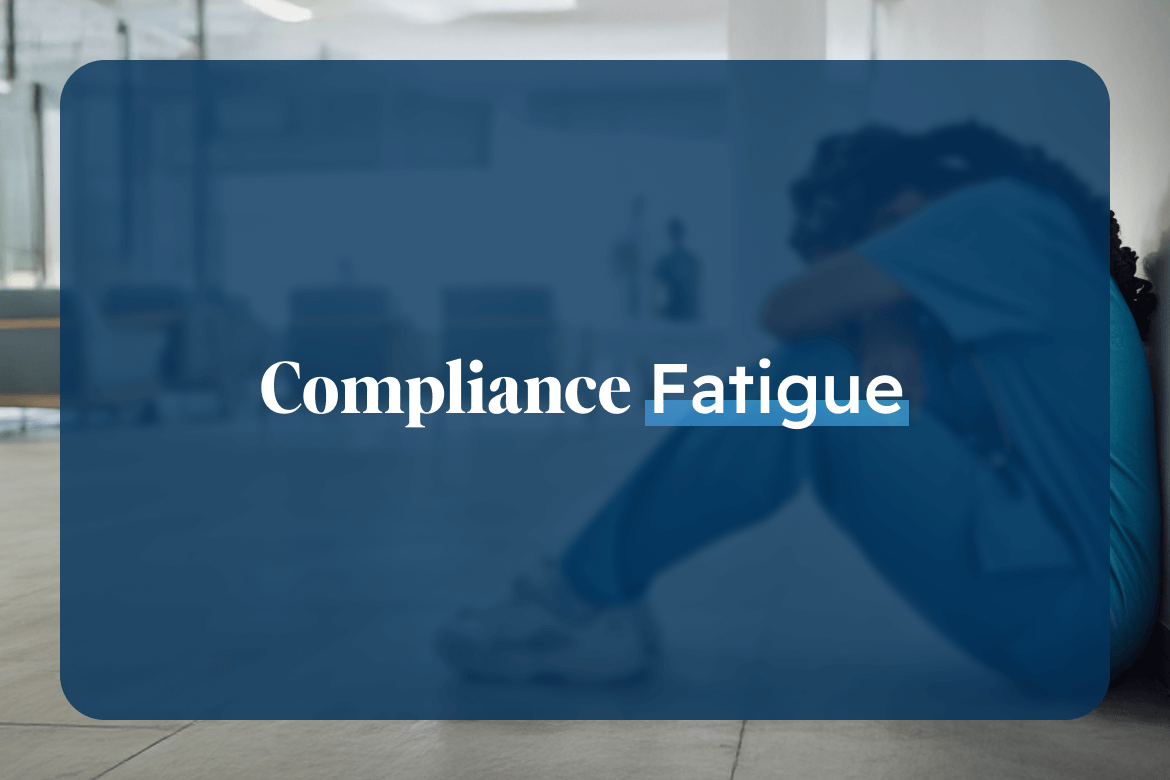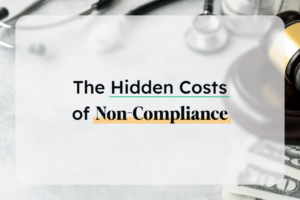It’s no secret that healthcare is an extremely demanding profession, for a multitude of reasons. Long hours, high-stress situations, and the emotional weight of patient care are just a few factors. That may be why according to the CDC, nearly half (46%) of healthcare workers reported feeling burned out.
Another often overlooked factor plaguing healthcare professionals today is regulatory compliance. Largely due to the constant need to keep up with ever-changing regulations and endless paperwork, the term “compliance fatigue” has recently grown in popularity.
Let’s attempt to better understand compliance fatigue by exploring what causes it, how it affects healthcare workers, and why technology is uniquely positioned to help combat this form of burnout. In the end, we’ll aim to make the healthcare environment a bit more manageable and supportive for those who dedicate their lives to caring for others.
What Causes Compliance Fatigue?
While remaining compliant at a healthcare facility is of high importance, it also contributes to exhaustion and stress due to its continuous and demanding nature. Healthcare professionals can experience “compliance fatigue” for several reasons:
- Frequently Changing Regulations: With laws, guidelines, and standards related to regulations and policies frequently updating, healthcare professionals are continuously required to renew their knowledge and change their daily routines, adding additional time to their already busy work schedule.
- Complex Compliance Requirements: Even without frequent changes, understanding and navigating the complex and sometimes conflicting compliance requirements can be mentally exhausting for healthcare professionals.
- Overwhelming Administration & Documentation: In an effort to follow compliance regulations, healthcare professionals constantly document and report every aspect of patient care and administrative tasks.These extensive requirements can often be overwhelming and time-consuming.
- Pressure to Avoid Errors: There is also a certain pressure for healthcare workers to avoid errors, as it can lead to severe legal or even financial consequences. Therefore, the high stakes of compliance cannot be overlooked as a leading cause of fatigue.
- Time is a Finite Resource: Often at healthcare facilities, there is insufficient support to meet compliance requirements effectively. Balancing compliance tasks with clinical responsibilities can also be challenging.
How Does Compliance Fatigue Impact Healthcare Professionals?
As stated earlier, there are many reasons that healthcare workers experience burnout, and compliance fatigue is one of them. Burnout is characterized by feelings of cynicism, detachment, and a reduced sense of accomplishment. None of which are likely feelings that you want your healthcare workers to experience. This not only affects the well-being of healthcare workers but also diminishes their capacity to do their job effectively.
The emotional impacts of compliance fatigue may reduce the level of empathy and attentiveness a healthcare provider is able to offer to their patients. Also, stressed and fatigued healthcare workers are more prone to errors, which can negatively impact the patient’s experience, and lead to even larger issues such as formal complaints or even lawsuits.
Along with diminished levels of patient care, compliance fatigue can impact job satisfaction overall. When healthcare professionals are overwhelmed by administrative tasks, they may feel that their primary role—caring for patients—is overshadowed. This can lead to frustration and a sense of dissatisfaction with their profession.
Therefore, addressing compliance fatigue head-on is crucial to ensure that healthcare professionals remain engaged, satisfied, and capable of delivering high-quality care.
How Can Technology Reduce Compliance Fatigue?
While there may not be a way to avoid regulatory compliance in the healthcare field, there are ways to make it easier, and ultimately, less stressful. Across a variety of industries, professionals have turned to technology to streamline processes, record crucial data, and automate tasks. Therefore, technology has the ability to play a significant role in reducing compliance fatigue in healthcare. Here are just a few ways it can help:
- Compliance Management Software: Tools like Surglogs help track regulatory changes, ensure adherence to guidelines, and manage documentation, significantly reducing the mental load on staff.
- Electronic Health Records (EHRs): EHRs streamline the documentation process, making it easier to store, retrieve, and share patient information securely.
- Secure Communication Tools: Encrypted messaging apps and secure email services facilitate safe and efficient communication, protecting patient data while ensuring compliance.
- Clinical Decision Support Systems (CDSS): These systems provide real-time assistance to healthcare providers by offering evidence-based recommendations, reducing the risk of errors and improving compliance with best practices.
- Training and Education Platforms: Online training modules and compliance tracking systems ensure that staff are up-to-date with the latest regulations and certifications.
By leveraging technologies like these, healthcare organizations can create a more efficient and less stressful work environment, ultimately improving both staff well-being and patient care.
Eliminate staff stress and safeguard your patients by tackling compliance fatigue with Surglogs, the premier regulatory compliance management platform. Schedule a demo today to discover how you can seamlessly link policies and procedures to accreditation standards and track compliance in real-time.


